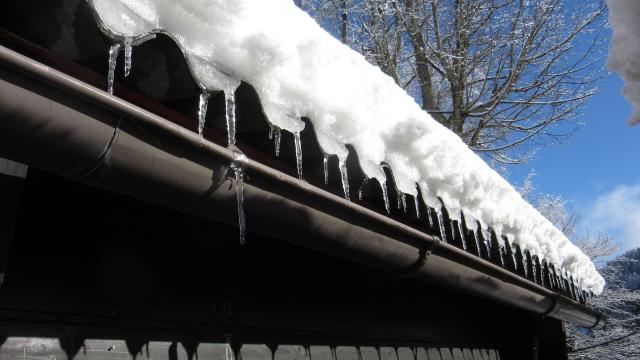
02 Jan, 2018/ by Surveyor Local /News
There's no more picturesque sight than the wintry scene of snow-covered rooftops. But that picture-postcard view could be hiding a multitude of property sins that only the expert eye of a chartered surveyor can reveal.
All RICS Level 3 Surveys commissioned through Surveyor Local are carried out by chartered surveyors who are members of the Royal Institution of Chartered Surveyors (RICS). And it is their experience and knowledge of how a property in good condition should look that means their expertise is particularly crucial in the winter months.
Heavy snow that sits on a house's roof for weeks, for example, can cause a multitude of problems both inside and out.
Long periods of frost or heavy rain take their toll on the exterior brickwork but can also make their presence felt indoors.
A visual inspection of a chimney stack may reveal potential risks to the roof or flue.
Thorough inspection no matter the weather
So what difference does the season make to how a chartered surveyor approaches a RICS Level 3 Survey, the most comprehensive of home inspections?
Aside from the rain or high winds making his or her life more uncomfortable during the external examination, the fact is that a chartered surveyor will be as thorough in January as he or she is in July. It's simply that the visual signs of damage or concern are likely to be more apparent during adverse weather.
Snow is one aspect of winter weather that can cause long-term problems. A period of prolonged snowfall can cause extra weight on roof tiles while also putting water storage tanks and pipe work in the loft at risk of freezing. When the snow lies in freezing conditions, gutters and downpipes can freeze, while gas piping and electrical wiring may also be affected by a cold snap. The surveyor will carry out a visual inspection both inside and out, looking for signs of dampness using a damp meter and checking for cracked or missing tiles where water damage may occur. Inside the loft space, the surveyor will look for any evidence of wet rot in the timbers.
When the snow melts, the water can often seep through tiles or brickwork. The surveyor will be looking closely at interior walls and floorboards for evidence of water.
Checking both inside and out
The surveyor will also check exterior brickwork for evidence of spalling, where water has entered the brick or concrete and caused it to flake or peel. Rain and frost are the main culprits of spalling, but snow can exacerbate the problem. Pointing around brickwork can also show damage caused by the weather and will be noted during the survey.
Water should run naturally off windows and sills, so the surveyor will look for evidence of pooling where the water gathers on the sills and could be a potential dampness risk.
Leaking gutters and down pipes are easier to spot in winter when there is greater rainfall. Again the surveyor will note where leaks could potentially cause problems with the brickwork.
Frost can damage the pointing on brickwork
High winds and heavy snow put chimney stacks at risk. The surveyor will make a visual inspection to ensure the stack is not leaning and that chimney pots that prevent dampness and water ingress are still in place.
Identifying all the issues
Not all weather damage is visible, but chartered surveyors are trained to identify the signs of damp or water damage to properties. You can put your mind at rest by commissioning a RICS Level 3 Survey through Surveyor Local knowing that the chartered surveyor who will carry out the inspection has the expertise to identify any problems that may end up costing you money.
For a free, no-obligation quote, call now or get an instant online quote.
